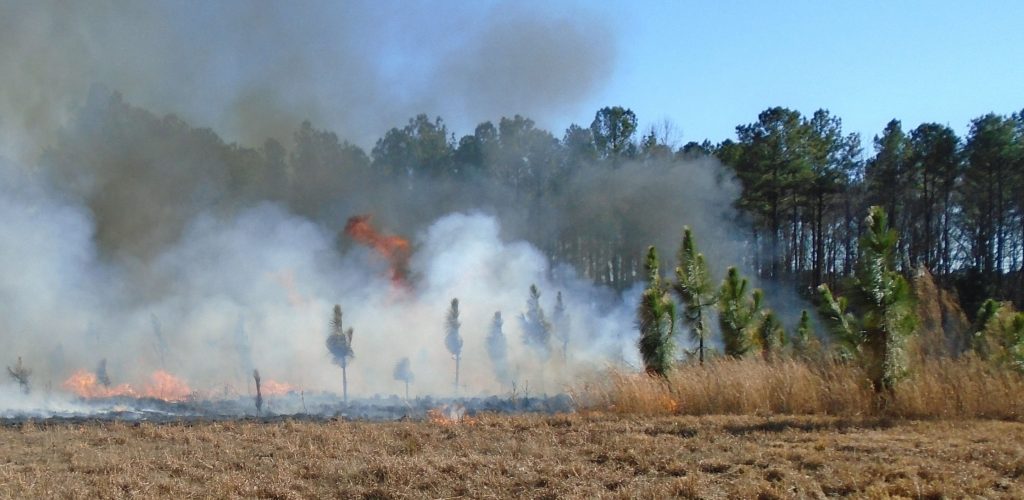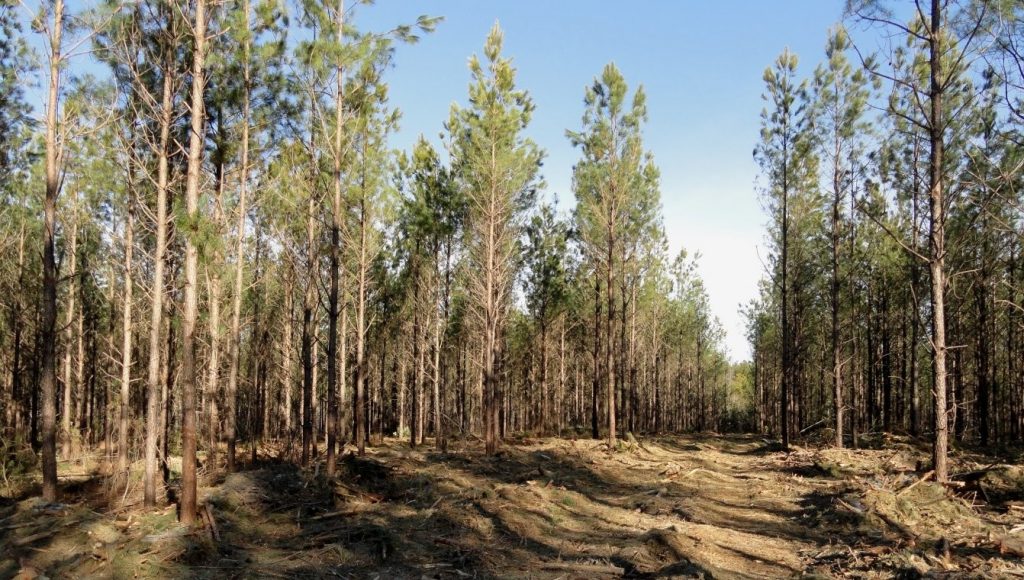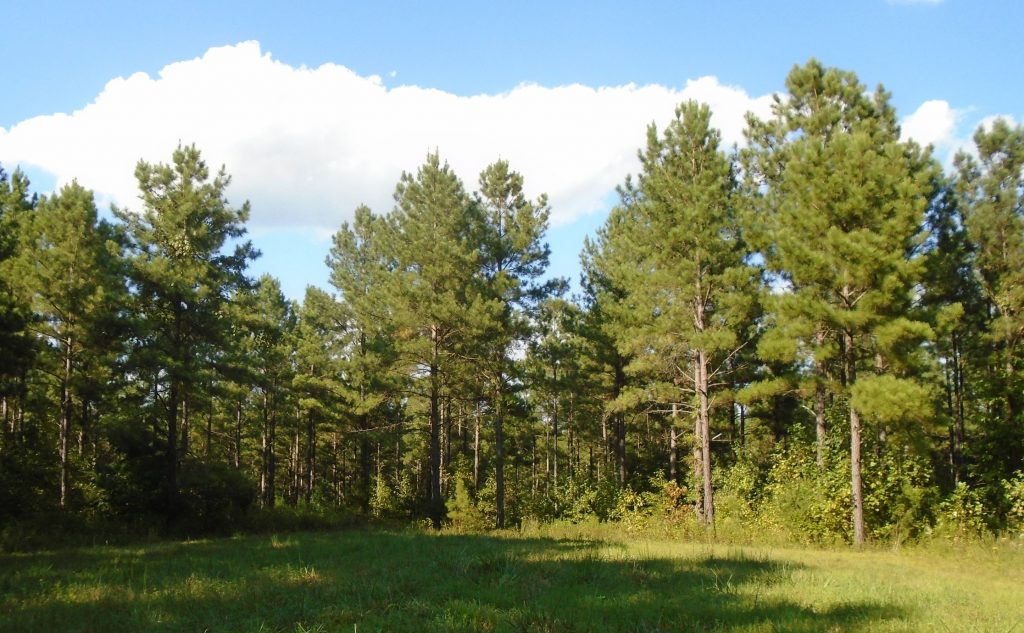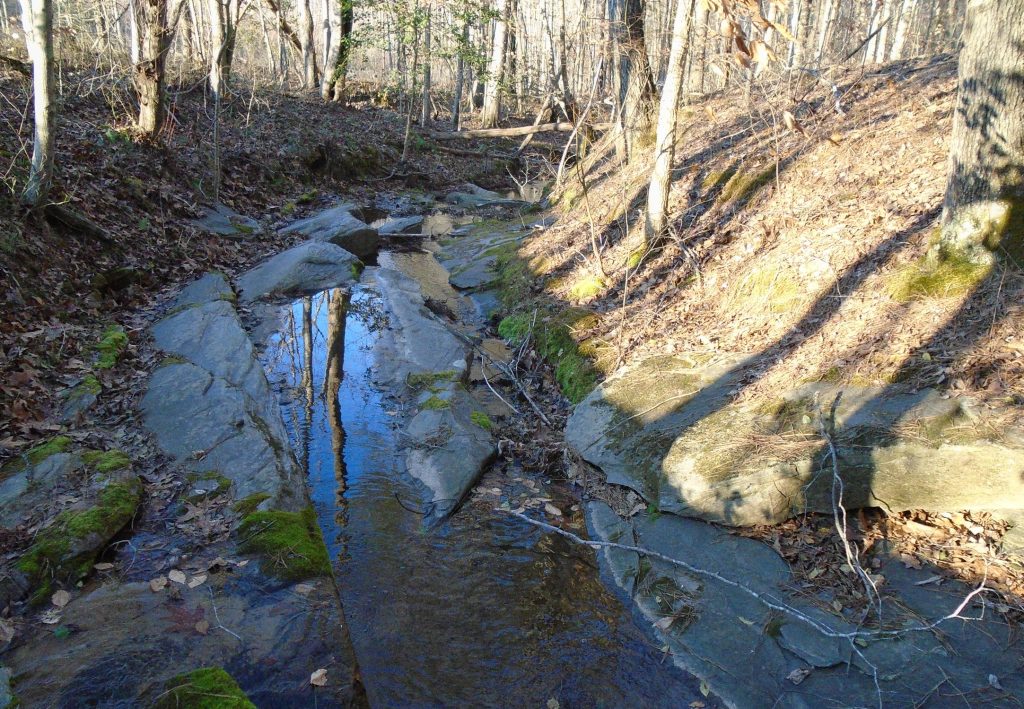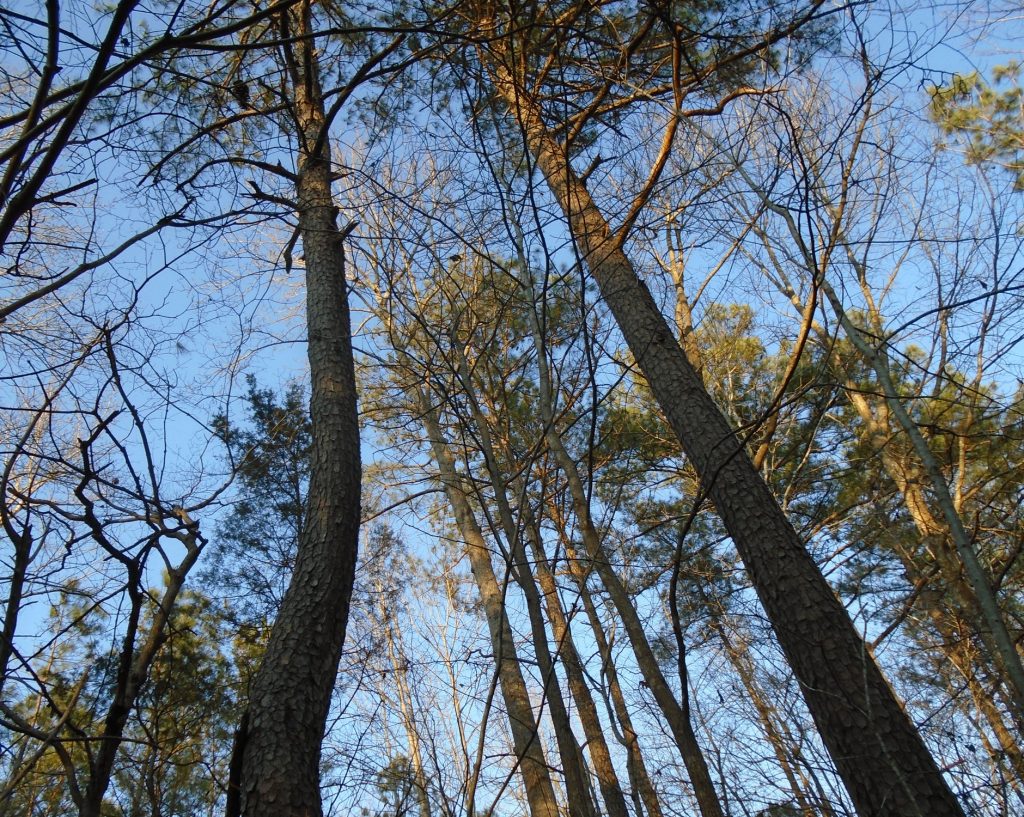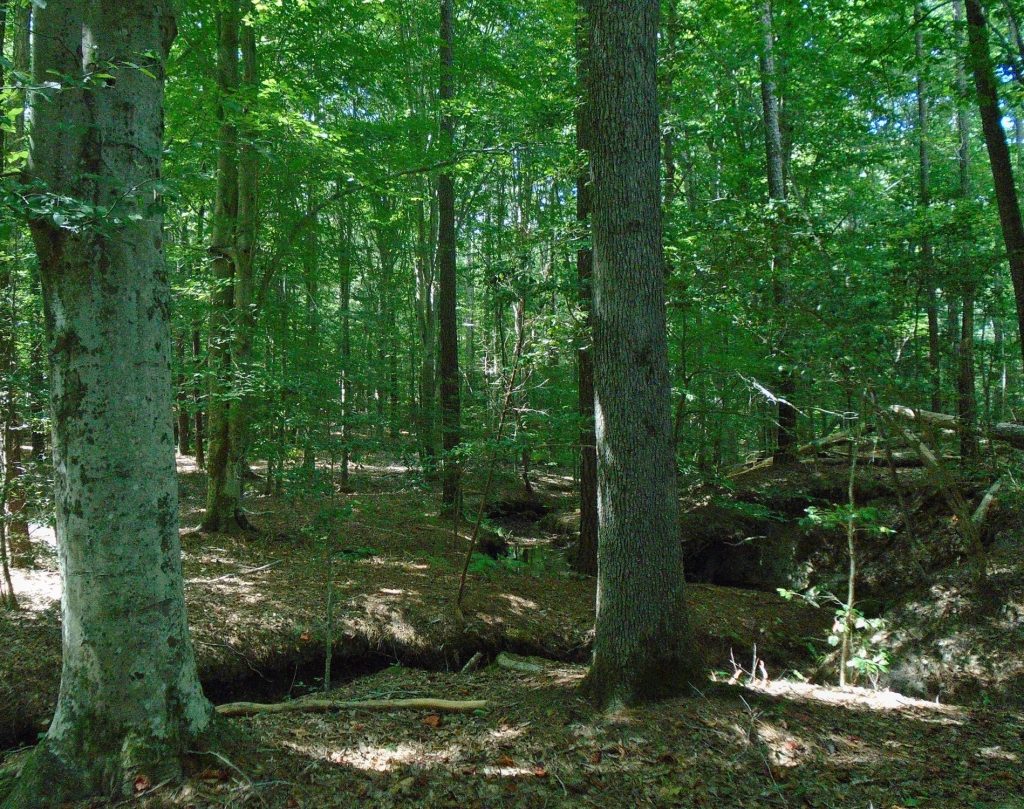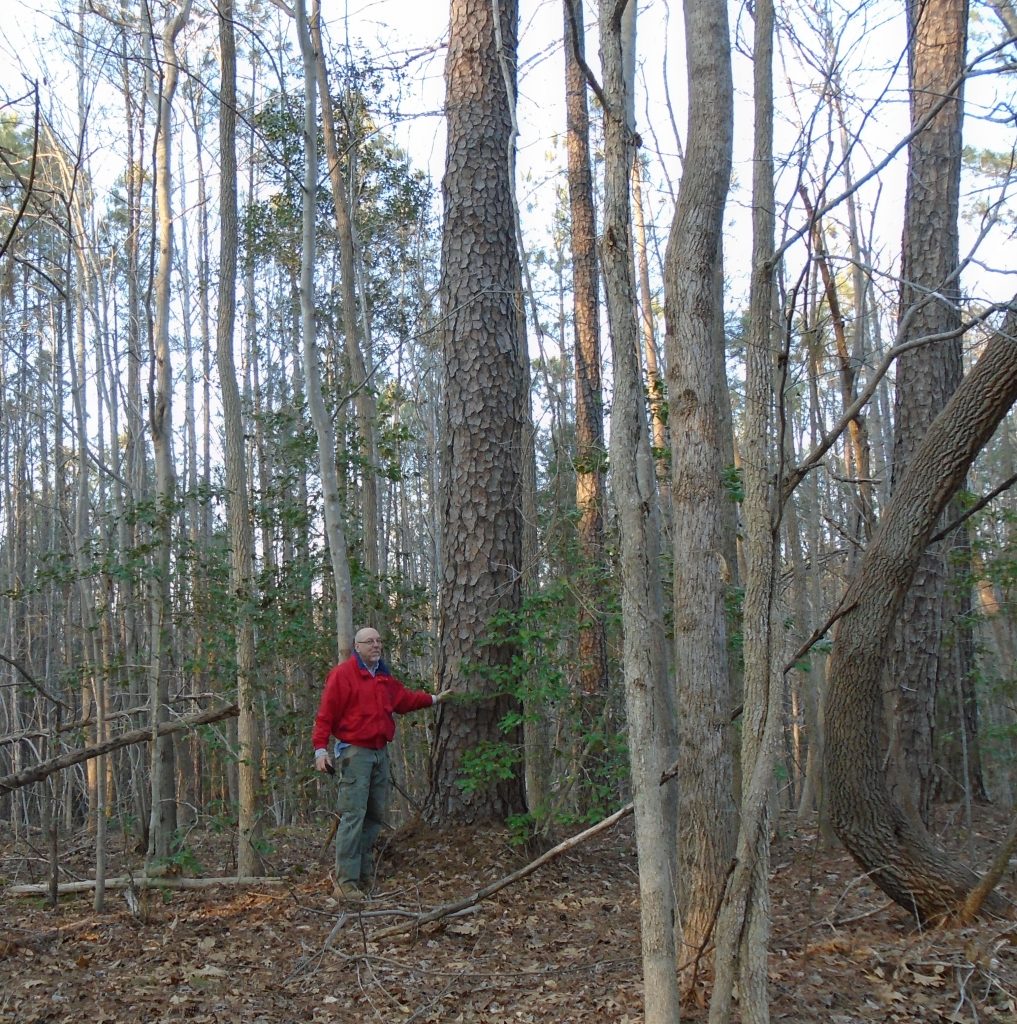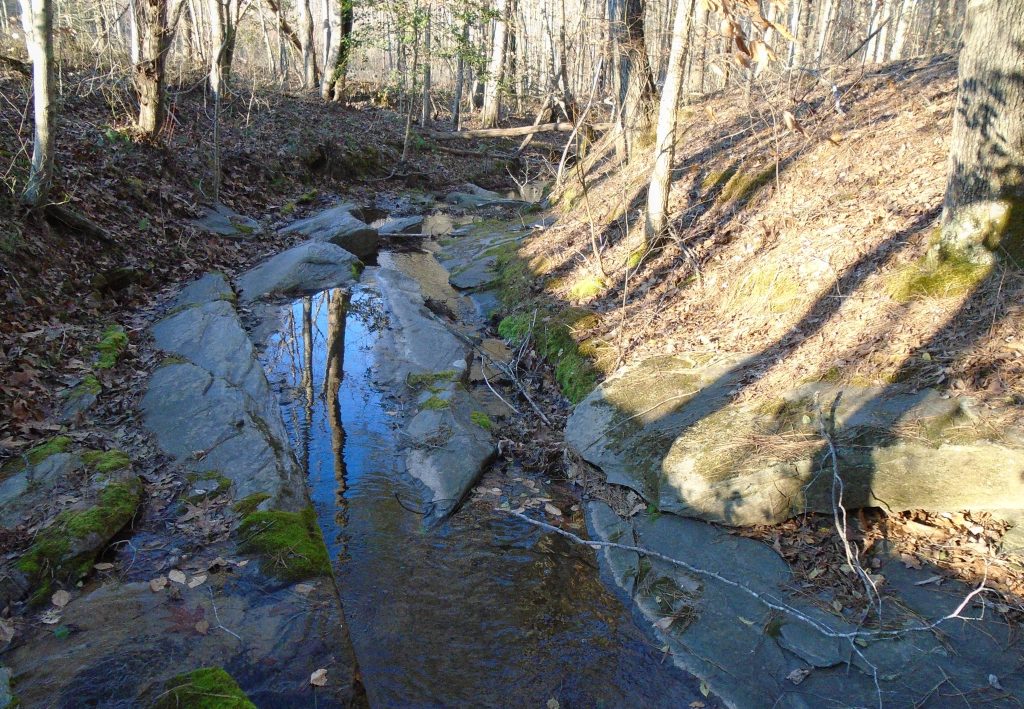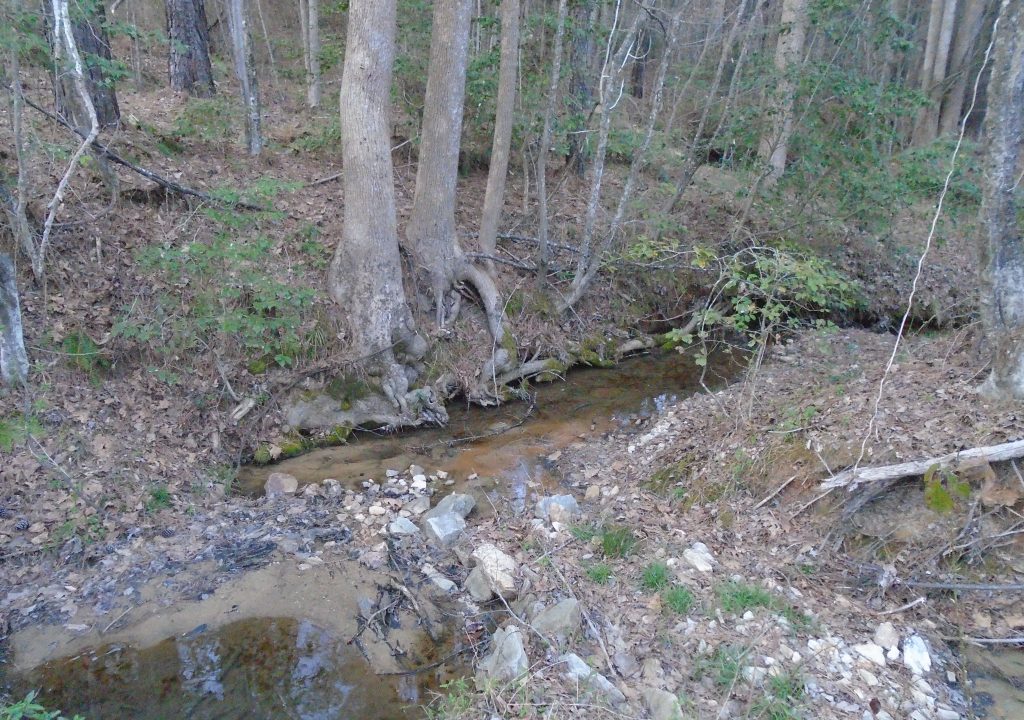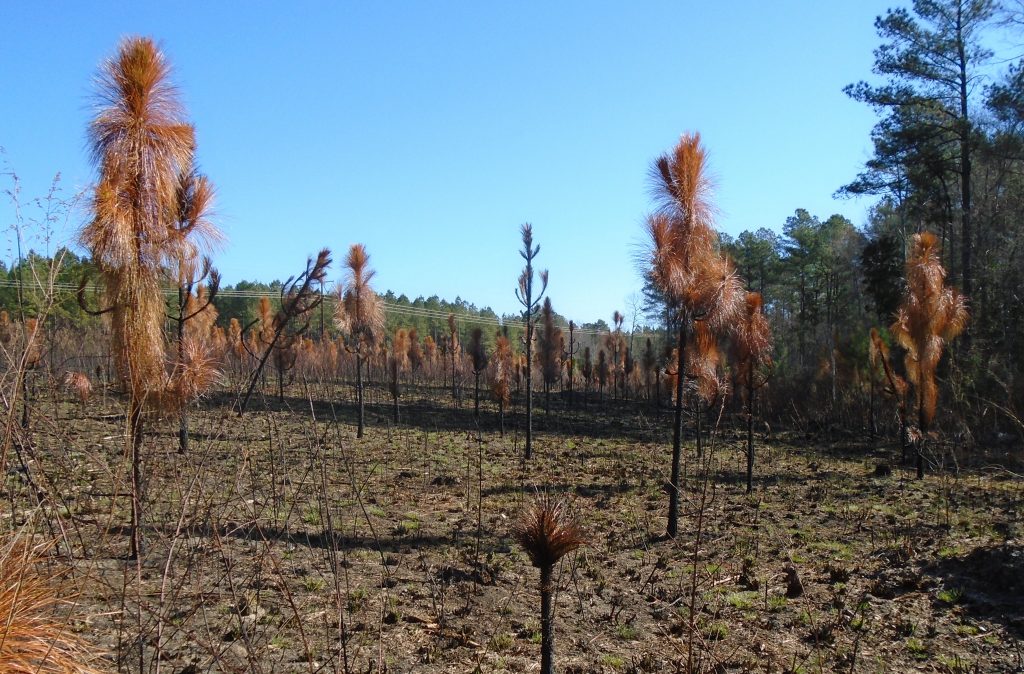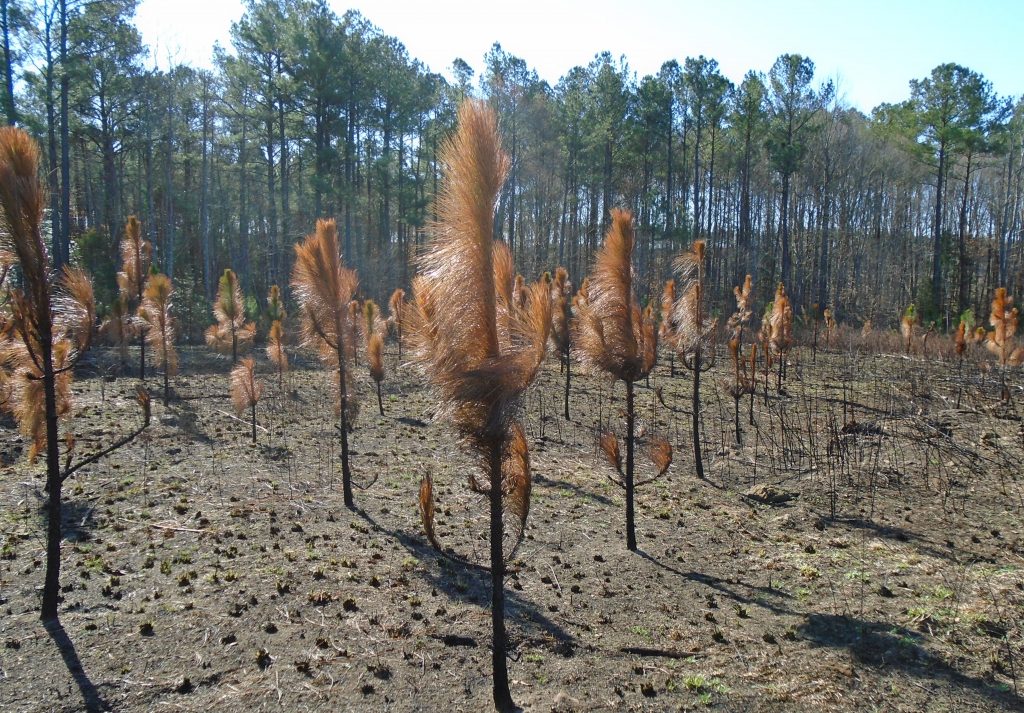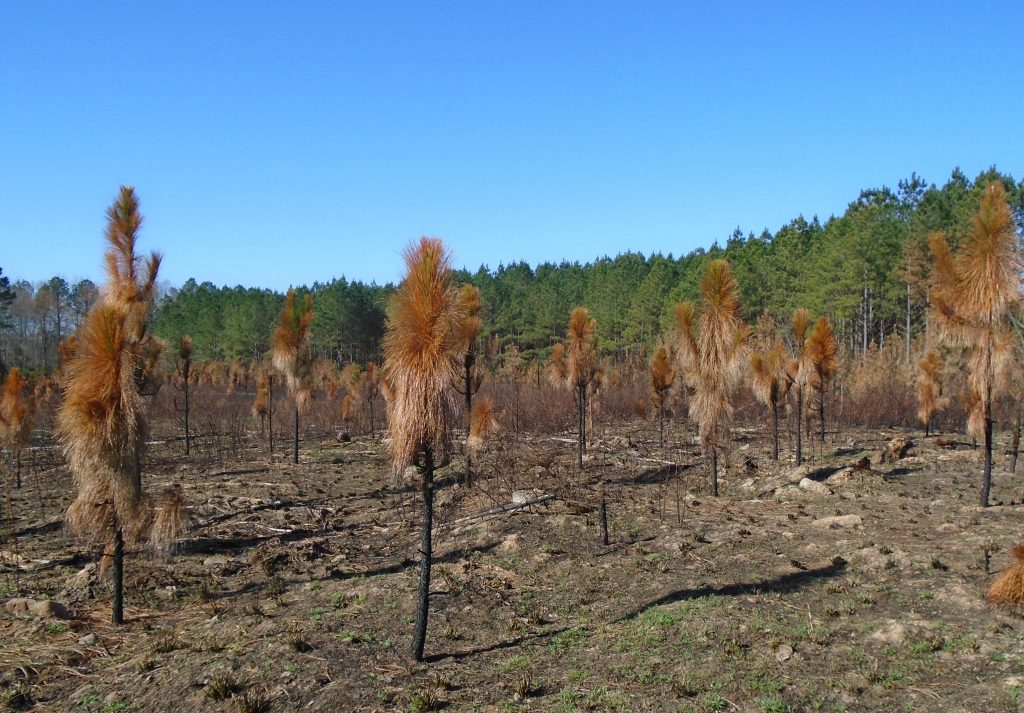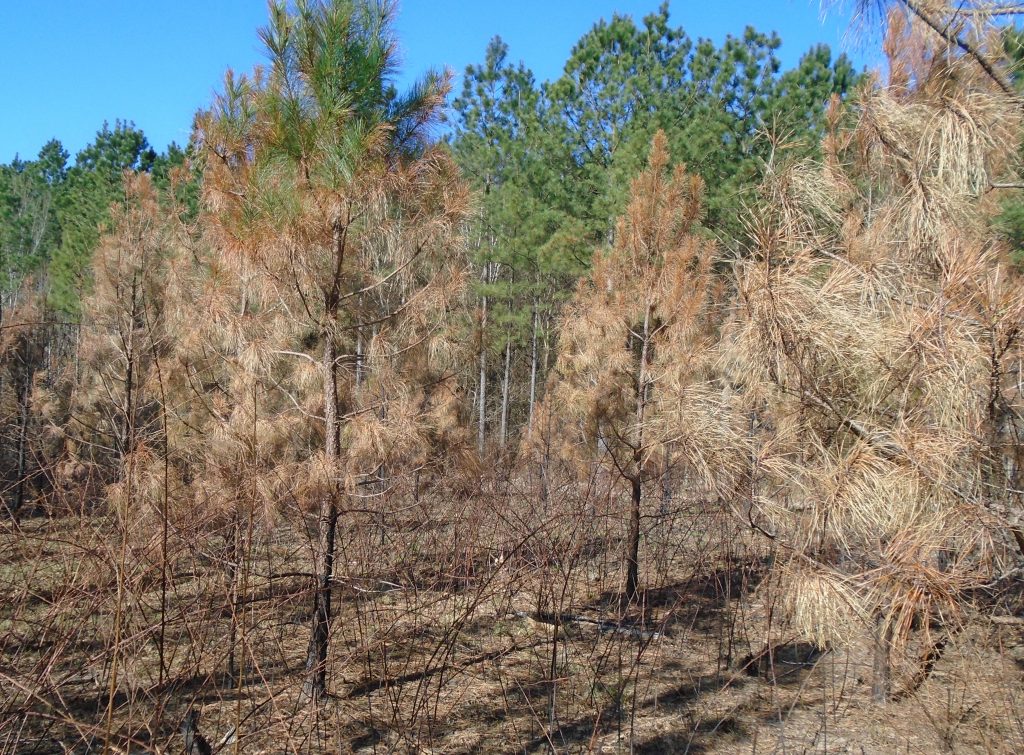Sky Islands – In southeastern Arizona, a unique geology has created a ‘sky island’ ecosystem – meaning you’ll find deer, bears and mountain lions in the arid, dry desert.
Forests Forever
I was talking to a couple people about building with wood. They acknowledged wood’s advantages, but asked if we would run out of wood. I told the unequivocally that we will NOT run out of timber in America. The United States is the world’s biggest wood producer, yet we have more wood growing today than in any other time in more than a century. I am not sure they believed me. I can mention statistics, but my certainty comes from my own observations. And I thought that I might be more persuasive if I shared that experience. Fortunately, I have photos. All the pictures are those I took of my own land, so I am confident in their veracity.
Above is a clearcut a few months after the loggers are gone. It looks very desolate, doesn’t it? Below is a few months later. Nature is reslient.
Let’s start with cutover land, i.e. land right after a clear cut. A clear cut must be done if you want to grow sun-loving trees, like pines. Since we grow pines, we do clear cut. If we were growing maples, we would cut selectively. If we were growing oaks, we would clear in patches. It all depends on the type of ecology you are working with. When I learned ecology in the 1970s, clear cuts were considered terrible things. They talked about climax forests that were supposed to be normal working toward this one goal. We have since learned that there is no one goal and we understand that MOST forest types are disturbance dependent. We need new forests, middle aged ones and old growth forests. That implies disturbance. The top photo I took on my land exactly one year after it was clear cut. You cannot see them, but there are 21,000 little trees planted there. There will be a young forest in a few years. In the meantime, this acreage provides wonderful habitat for bobwhite quail & deer. And I think it is beautiful.
Within a few years, you can see the little trees popping up through the brush. The picture above shows one of my plantations of longleaf pine. They are six-years old, which means that this is a clear cut after seven years. They soon will be be entering a stage of very rapid growth. On a side note, longleaf pine requires – REQUIRES – fire. Fire can be very destructive, but it is also part of the ecology in many systems. It is a mistake to exclude fire in many places. You can see a photo below of our burning. Don’t worry. It’s all good. I started the fire and I would not do it if I though it would destroy those trees I love. The longleaf ecology is the most diverse in North America because of the under story and the variety of plants on the ground, all of it enabled by regular fire.
In about fifteen years, loblolly pine in southern Virginia will be ready to thin. We MUST thin the trees to allow proper growth and avoid pests. It is like thinning flowers in a garden. If they are too close together, none of them grow right. The photo above shows fifteen-year-old pines thinned a couple weeks before. We removed 2/3 of the of the trees, which became pulp to make cardboard. Follow this link to see where they went. Below is what they look liked like five years later. There are fewer much healthier trees and more total growing wood than there would have been had we not thinned. These trees are twenty-years-old. We will soon thin them a second time, removing about half the total number of trees. Five years after that, there will be as much total standing timber, maybe a little more, since the thinning will allow the trees to grow that much faster and stronger. Healthy forest require thinning.
Below here are loblolly pines thirty-years-old. You notice that they are bigger than the twenty-year-old trees, but not that much. Trees continue to grow their entire lives, but they start to grow a lot more slowly after they are mature. In the case of loblolly pine, the slow a lot after they are thirty and it is almost time to harvest and start over.
One bonus section. One of the criticism of forestry is that we plant mono-culture, i.e. only one sort of tree. This is potentially a problem. We plant a lot of loblolly pine in the South, but we also are planting other sorts of trees. I am restoring longleaf pine on my farms, for example. We also have significant diversity in areas around the streams and wetlands. We protect water by not cutting near streams and lakes. This means that there are a lot of old, mixed forests. Besides protecting water, these zones provide corridors and shelter for wildlife. And they are just beautiful and peaceful places. Below are pictures of our stream management zones. You can see that these are open, mature forests.
And finally, forest owners are usually forest lovers. This is a picture of what I call “Old Virginia” since it features the mix of oak, shortleaf pine and others that made up a typical mixed forest of the past. This will not be harvested. We just enjoy them.
Anyway, will we have enough timber in the future? Yes we will.
Wood is 100% renewable resource. We know how to grow timber sustainably in the U.S. and we are doing it. Wood is the most environmentally benign building material throughout its full life cycle. We should build more with wood.
Posted also on LinkedIn
Clean water is a forest product
Clean water is a forest product. A forest slows runoff and filters the water. I was reminded of that looking at our stream management zones. These are areas near streams that we mostly leave in natural forest to protect water quality.
Went down to the farms today, along with Alex & his friend Colin. We walked around on the Brodnax farm. I rarely do the full circuit. Showing them the farms gave me a chance to get in touch a little more myself. You can in the photos that the SMZs are doing okay.
The first picture is a big shortleaf pine with me to show scale. Shortleaf pine grow slowly. I do not know the precise age of the trees in the big shortleaf in the grove, but I am guessing that they are at least 70 years old, which indicates that this land has not been cleared at least since the 1940s, before I was born anyway. Shortleaf pine can live more than 300 years. Unlike most pines, they tend to persist in mixed hardwood forests, often in association with oaks as you see here. Notice the unique bark on the shortleaf. It is one of the easiest ways to identify them. It is kind of like alligator skin, as you see in picture #2.
Next shows toad eggs in an ephemeral pond. Colin told me that they were toad, not frog eggs because they are in that kind of chain. I don’t know about that. I do know that amphibians need these sorts of temporary ponds to reproduce and that such ponds are getting harder for them to find, as people make sure their yards are neat, without mud puddles. The pond must be permanent enough (at least a couple months) to let the amphibians develop and move out, but not so permanent for a resident fish population that eats the eggs or tadpoles. This pond is fed by a seepage from the woods above. Below it runs into the creek, so I think this will fit the bill.
The other two photos show water in the creeks. It looks clean to me, so our woods are doing their job to protect water quality. We are part of the Chowan watershed via the Meherrin River in Brunswick County. The water eventually ends up in Albemarle Sound in North Carolina.
Pine burning plus one month
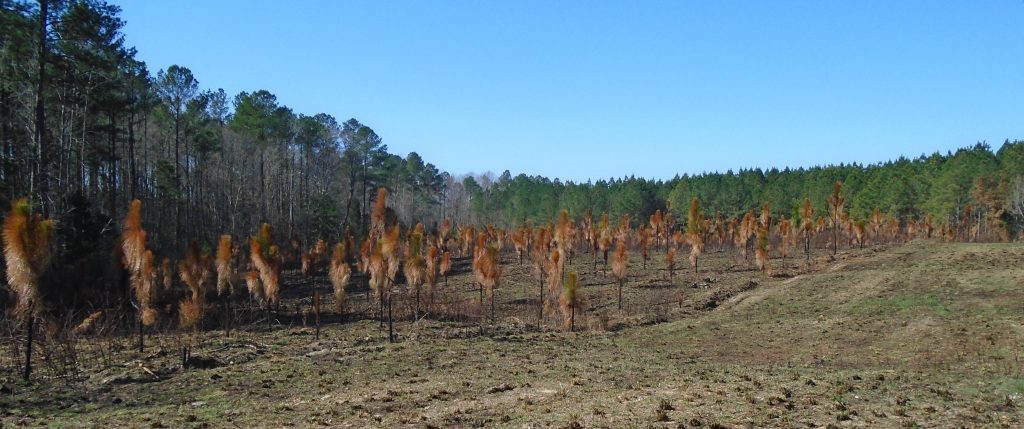
More pictures at the end.
Went to visit the burn plus one month. It is looking desolate still, but a few green shoots are coming up. By next month, we will see growth bursting out all over. I checked for the terminal buds on the longleaf and they were intact on those I checked. I am not 100% confident in the loblolly, but I think they will be okay too.
If the loblolly are okay, I am going to use fire more in the new stands. I spent most of the rest of the day hacking away at vines in the 2003 loblolly. Running fire through them every couple years would control these things. I cannot use fire in the 2003 loblolly yet, since the vines and trapped branches currently caught up in them would likely carry the fire into the canopy, but if I do it with the 2015 loblolly starting in 2020 I can prevent that situation in the first place.
All that said, I do enjoy cutting vines because it gets me into the woods with something to do, but I recognize that my efforts are not very effective and the vines are hurting my trees. Better to control them with better means. Beyond all that, I am getting a little old for this work and it is unlikely to get any easier. I am always stiff after a day of vine fighting. This time I even managed to hurt myself with my saw. I hit my knee and made five evenly spaced holes. Lucky it was just a hand saw. There was a lot of blood, although not much pain. This morning, however, it is stiffer than usual.
One more thing, a good one – look at the longleaf plantation. Since we did a good job of site prep, there was not much brush. I spent many hours knocking down volunteer loblolly and hardwood. The fire get more of that job done and it looks like we will have a superb stand of longleaf.
Telling the truth
You can truthfully recall events that never happened and it is easy to honesty forget ones that did. Memory is never perfect. Scientist who study these things explain why. Our memories are not like recording devices and memories are not stored like a picture on a computer hard drive. Rather, remembering is like making a new drawing each time. Memories are recreated each time we try to recall something. That means that our memories of one instance are mingled with those of other events that happened before or after. Subsequent event can, and often do, alter memories of things before.
I have been thinking about this since 1990. I don’t rely on memory for this information; I wrote it down. At that time, I was reading about decision making and found a section that addressed how relying on memory contributes to bad decisions. The authors suggested an exercise, which I have followed, on-and-off, for more than 25 years. I recommend it as a way of improving decision making and life in general. Write down your predictions for some significant event. I am not talking about big political or economic ones, but ones in your own life. Sometime after the event, write down what you think you predicted. Then examine your original prediction. You will almost always find that your recollection of your prediction was wrong in many details and that it is wrong systematically in the direction of making it more in line with what really happened. We edit our memories to make ourselves seem smarter, or at least more prescient. Are we telling the truth? No, we are not. Are we lying. Well, we are also not lying.
In my case I am morally certain that I cannot call it a lie. I am writing only to myself and I know that I am trying to tell the truth. Since I rarely share this information with anybody else, there is no benefit to shading the truth.
What I have learned is that I am incapable of telling the full truth when I rely only on my memory. And my memory, at least my ability to memorize, is better than average. Besides a few outliers who perform at carnival freak shows or are otherwise freakishly strange, nobody can tell the full truth from memory alone. BTW – most of the people who can recall events with machine-like accuracy are idiot-savants, who can do little else in life and are more to be pitied than emulated.
I am not making the case here that we should be untruthful, nor that we should tolerate liars. On the contrary, I try very hard to be honest in everything I do and say. But I recognize that I fall short and when I do it is not always, in fact it rarely results from moral failing or nefarious intent. There are limits beyond which humans cannot go and that does not mean we are all equally bad.
Michael Phelps won 23 Olympic gold medals. It is safe to say that he is a faster swimmer than anybody reading this. Yet there are swimming events where most of us would have a chance to do as well as he can, maybe better. If the test was just to float in the water, most of us could do as well as Phelps and if the test was to swim from California to Hawaii none of us could make it, so we also would do as well as Michael Phelps.
Tests that are so easy that everybody succeeds or so hard that everybody fails are meaningless standards. Yet it is tempting to apply both to bring down the more accomplished.
We are doing exactly that in our age of fact checks and ubiquitous recording. As often happens, the ostensible quest for the perfect is making it impossible to be good and demands for truthfulness beyond human capacity is creating a more dishonest society in the practical sense. All of us pool floaters can self-righteously say that we are as good as Michael Phelps, since all of us can float and can demonstrate with scientific certainty that he would fail to swim from California to Hawaii. Don’t believe me? Let’s have a trial and test him.
A good society is good enough and it is better than a perfect society. An honest person tries to live life according to truthful principles, but never succeeds perfectly. We should lighten up on this, lest we empower the liars and the cheats to argue that they are as good as everybody else.




